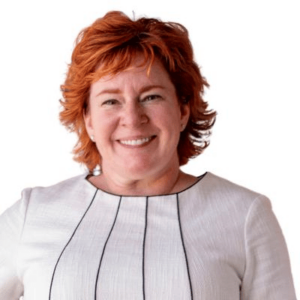By: Jenn McMillen
A billionaire sports team owner wants to cut the cost of American prescriptions. Should the big drug chains check their pulses?
Mark Cuban, owner of the Dallas Mavericks and a long-time Shark Tank investor, in January launched his price-popping discount e-pharmacy, Mark Cuban CostPlus Drug Co. (Yeah, you need a glass of water to swallow that name, so let’s refer to it as CostPlus Drug.)
At the time, news outlets like The Street suggested Cuban was taking on the retail heavies – CVS, Walgreens, Rite Aid, and even newbie Amazon Pharmacy. His goal: to offer lower-priced generic drugs and “shield consumers from inflated drug prices,” according to a company statement. (CostPlus’s website is operated by online healthcare company Truepill.)
New Age In Medicine: The Pluses And Minuses Of Rx
Now, 10 months later, we’ve had time to examine the extent to which Cuban’s low-priced option is affecting sales at big retail pharma, and across the industry. He is, after all, competing not only with retailers, but also with price-cutters, such as Amazon Pharmacy and Good Rx.
Here is a breakdown of how these drug-store alternatives make a buck, and save a buck.
CostPlus is a registered pharma wholesaler, so it can bypass the markups retailers typically make because it doesn’t have to cover overhead costs. It charges the manufacturer’s price for a generic drug, plus a 15% flat margin, a $3 pharmacist fee and $5 shipping, according to CNET. So a drug that sells for $10 wholesale is calculated at $19.50, all in. CostPlus now offers nearly 800 drugs (from 100 at launch) and serves more than a million people, Katie Couric reports.
What distinguishes CostPlus is that it avoids pharmacy benefit managers (PBMs). These are companies that aggregate a medication’s demand and then negotiate fees with pharmacies and drug manufacturers. Instead, CostPlus created its own PBM, pledging it will be “radically transparent” in negotiating its prices. (This is a dig: PBMs have been criticized for pocketing negotiated savings and for charging Medicaid more than what the PBMs pay to pharmacies.)
How Good Rx Works
Unlike CostPlus Drug, GoodRx’s revenue comes primarily through PBMs, according to its initial public offering. However, GoodRx targets a specific niche – consumers who choose to buy prescriptions outside of insurance. Many of these consumers, insured and uninsured, don’t fill their prescriptions at all because of high deductibles or prices.
By targeting these customers, GoodRx increases the number of cash transactions for PBMs, expanding their markets. So when a patient uses a GoodRx code, a PBM receives a portion of the payment and GoodRx then collects a fee from the PBM. GoodRx also makes money from advertising and referral fees, its website states. Who are the big PBMs? The three leaders are Caremark/CVS Health, Express Scripts (Cigna) and OptumRx (United Health), according to the pharma economics site Drug Channels.
Note, GoodRx is one of several Rx discount card providers, including SingleCare.
How Amazon Pharmacy Works
Amazon Pharmacy’s money-making advantage is rooted in its Prime Memberships, which accounts for nearly 60% of the U.S. population (or 152 million subscriptions), according to Insider Intelligence. For drug makers, that’s a lot of volume.
Members can compare prices and determine the cost of a prescription if paying with insurance or using Amazon Pharmacy’s discount card. That savings card cuts up to 80% off generic prescriptions and 40% off brand-name medications (when paying without insurance). Prime members also can get these savings at 50,000 participating pharmacies by using Amazon’s prescription savings card – similar to GoodRx and other discount card providers.
The key distinguishing feature is that Prime members get free two-day shipping. Non-Prime members can use Amazon Pharmacy with free five-day delivery.
Where And How Drug Store Chains Compete
Are traditional drug retailers suffering the side effects of Mark Cuban’s high-cost elixir? In August, U.S. pharmacies and drug stores filled more than $28.1 billon in prescriptions, according to the U.S. Census Board. That compares with $24.5 billion in August 2020 and – to go way back for context – $6.3 billion in 1992.
These rising figures probably represent a combination of prescription volume as well as price surges, so the cost isn’t edging down yet. What matters more for this analysis, however, is the extent to which growth in Rx fulfillment resulted from the expansion of lower-priced channels, such as CostPlus’s direct-to-consumer model.
Were sales diverted from the big three drug chains? Here is how they are doing so far this year:
- CVS in August reported a $7.6 billion sales gain in its Pharmacy Services Segment for the first six months of this fiscal year. That’s up 10.3% over the same period in 2021. CVS did not break out online pharmacy orders in its quarterly report, but in the first quarter of fiscal 2020, it realized a 1,000% increase in online prescriptions, according to Digital Commerce 360.
- Walgreens, however, in October reported an 8.8% decline in its fiscal fourth quarter U.S. pharmacy sales. Interestingly, it blamed the drop on a 10 percentage point decline in its AllianceRx Walgreens business, its specialty and home-delivery pharmacy service.
- Rite Aid in September said sales in its Retail Pharmacy Sector declined by 1.1% in the fiscal second-quarter. This was due to a reduction in Covid vaccine and testing revenue, as well as store closures. A rise in other prescriptions, however, offset the decline, indicating a possible net gain without the Covid factor.
Regardless of the one-time comparisons, these chains do offer something an online billionaire cannot: one-to-one care. Most have supplemented their pharmacy services with medical, dental and even behavioral health services. Their customers choose to make trips to the bricks because they can meet with retail care professionals more quickly and conveniently than they could with a physician at a traditional practice.
Could the high cost of prescriptions eclipse the lure of such convenient service? The prospect definitely needs to be addressed. Ideally, retailers will recognize CostPlus’s purpose, and CostPlus in turn will see the value of what retailers are providing. And customers, ultimately, will benefit from the getting-better practices of both.
Follow me on Twitter or LinkedIn.
I have been building and sharing expertise in the retail industry for 20+ years. My wheelhouse includes customer relationship management, shopper experience, retail marketing, loyalty programs and data analytics. My perspective is unique because I have both extensive retail/client and agency/consultant experience.
In 2015 I founded Incendio, a firm that builds and fixes marketing, consumer engagement, loyalty and CRM programs. Incendio is a trusted partner of some of the biggest brands in the U.S., including Chipotle, GNC, PetSmart, NASCAR and Godiva.
Before Incendio, I honed my retail expertise filling executive roles at GameStop, Michaels, Tuesday Morning, Jo-Ann Stores, AT&T and Blockbuster. I’m also an award-winning instructor at Southern Methodist University, where I’m helping train the next generation of business leaders.
I frequently speak at retail and marketing conferences around the world and have been quoted in global news outlets including Forbes, Barron’s, MSN, QSR and CPG Matters.





